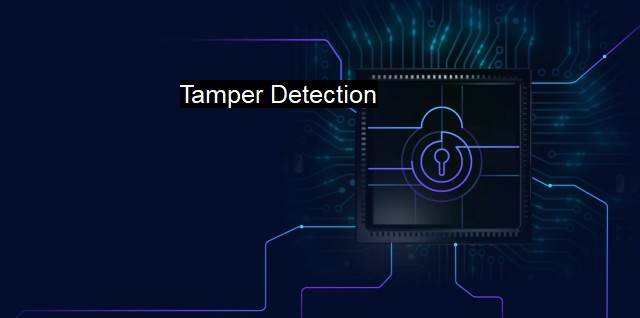What is Tamper Detection?
The Importance of Tamper Detection in Cybersecurity: Protecting Antivirus Software and Beyond
Tamper detection is a critical feature in cybersecurity systems that offer protection to digital data in systems or devices against unauthorized usage, modification, or access. it refers to a set of mechanisms and approaches designed to alert users or administrators of attempted unauthorized access or alterations to a system, network, database, or device. The term “tampering” refers to those unauthorized adjustments, manipulation, external interventions, or intrusions.Tamper detection has a significant role as an essential safeguarding tool that protects private, confidential, or Business related data. This concept predominantly focuses on providing a safe digital environment, where critical data, software, and systems remain secure from malicious intrusions, data breaches, and data manipulations.
Tamper detection capability is not solely assigned to the detection and prevention of unauthorized changes. It is also concerned with spotting different forms of anomalies or irregularities within a system that might indicate a possible malicious activity or intrusion attempt. These anomalies could range from subtle data manipulations, disk changes, memory alterations to more glaring issues like system failures, sudden modifications in login activities, or permission missions.
The power of tamper detection comes from its capacity to provide real-time alerting systems that will notify admins or users about any untoward activities at the earliest. The sooner a potential attack or tampering is detected, the sooner countermeasures could be implemented to mitigate the impact or prevent any form of data loss. Thus, this feature is invaluable for a comprehensive cybersecurity plan, ensuring the rapid detection of vulnerabilities or threats and in the long-term for maintaining the overall health and integrity of systems.
Understanding the significance of tamper detection should include the different practices and measures employed for effectively executing it as a preventive feature. Elements such as tamper-evident measures and tamper-resistant systems form a crucial part of the implementation.
Tamper-evident measures are the techniques or equipment used to provide visible, audible, or automatic alert when tampering has occurred. These typically involve mechanisms that show clear signs of tampering attempts, making it easy to identify such occurrences immediately. On the other hand, tamper-resistant systems involve those that are designed with built-in resistance to tampering. This can include physical systems or devices designed to resist physical tampering and also digital security measures that protect against digital tampering, such as sophisticated encryption, safeguarding passwords, or digital certificates.
Undeniably, caution against tampering is a fundamental attribute of every antivirus software. Ensuring the tamper detection feature in an antivirus software helps fortify the defenses against tampering attempts, even whilst the software is running. By extension, it ensures that the software itself is protected from being an easier target to disable, hence securing the systems which it shields.
Tamper detection is indispensable in cybersecurity practices and antivirus mechanisms. It exists as a layer of protection that semaphores any attempts of unauthorized or undesirable interaction with the systems. It empowers businesses, users, and admins to exert stricter control over their system, reinforcing the capacity to maintain security, rapid threat response, and contribute to a more robust, more enduring framework of Cybersecurity. As cyber threats evolve with time, effective tamper detection mechanisms are increasingly assuming a more vital role in safeguarding the world’s expansive and growing digital data spectrum.

Tamper Detection FAQs
What is tamper detection?
Tamper detection is a security mechanism that helps identify if a system or application has been modified in an unauthorized manner. It involves using different techniques to detect and prevent any attempts to tamper with or modify the system's data or configuration.Why is tamper detection important in cybersecurity?
Tamper detection is essential in cybersecurity because it helps prevent unauthorized access, data breaches, and other security threats. It ensures that the system's integrity is maintained and that any unauthorized changes are detected and addressed immediately.What are some common tamper detection techniques used in antivirus software?
Some common tamper detection techniques used in antivirus software are code signing, checksum verification, file system monitoring, and anti-debugging techniques. These techniques help to prevent malicious actors from modifying or tampering with the antivirus software and its components.How can I know if tamper detection is enabled on my system?
To know if tamper detection is enabled on your system, you can check the settings of your antivirus software or consult the vendor's documentation. Usually, tamper detection is enabled by default in most antivirus software, but it's always a good practice to verify and ensure that it's enabled to enhance your system's security.| | A | | | B | | | C | | | D | | | E | | | F | | | G | | | H | | | I | | | J | | | K | | | L | | | M | |
| | N | | | O | | | P | | | Q | | | R | | | S | | | T | | | U | | | V | | | W | | | X | | | Y | | | Z | |
| | 1 | | | 2 | | | 3 | | | 4 | | | 7 | | | 8 | | |||||||